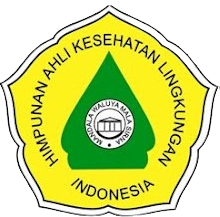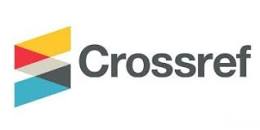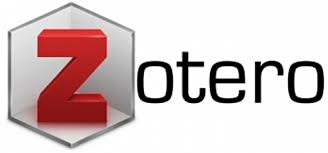A Cross-Sectional Study on the Risk Factors of Overnutrition Status among Junior High School Students
Abstract
Abstract
Background: Overweight status in adolescents is known to have a high prevalence and continues to grow every year. This trend increased by 5.2% among adolescents aged 13-15 in Indonesia, and the Bekasi Regency has the fourth highest prevalence in West Java Province. Over time, changes in the quality and quantity of diet and lifestyle can be a factor in the occurrence of overweight status in adolescents. This study aims to determine the relationship between ultra-processed food consumption habits, physical activity, and sleep duration with overweight status in adolescents at Junior High School 1 South Tambun.
Method: This study used an analytic observational method with a cross-sectional design. The study population comprised 160 students in grades 7 and 8 at State Junior High School 1 South Tambun, and a sample of 113 respondents using a stratified random sampling technique. Research data were obtained directly through anthropometric measurements and filling out questionnaires. Data were analysed using univariate and bivariate analysis with the Chi-Square statistical test.
Result: The percentage of overnutrition status in adolescents was 28.3%. Based on data analysis through the Chi Square test, the relationship between ultra-processed food consumption habits and overweight status (p=0.270), physical activity and overweight status (p=0.306), and sleep duration with overweight status (p=0.771).
Conclusion: Consumption habits of ultra-processed foods, physical activity, and sleep duration are not associated with overweight among Junior High School 1 South Tambun adolescents. The high percentage of overnutrition status in this study suggests that adolescents should adopt a healthy diet and lifestyle to prevent an increase in the prevalence of overnutrition status.
References
Februhartanty J, Ermayani E, Rachman PH, Dianawati H, Harsian H. Gizi dan Kesehatan Remaj. Vol. 2. 2019. 15–17 p.
Mujab AS, Irawati RP, Rahmawati N. Pengembangan Modul Bahasa Arab Berbasis Teori Psikologi Perkembangan Remaja Elizabeth B. Hurlock Kelas X Ma. Lisanul’ Arab J Arab Learn Teach. 2018;2(1):1–7.
Rachmayani SA, Kuswari M, Melani V. Hubungan Asupan Zat Gizi dan Status Gizi Remaja Putri di SMK Ciawi Bogor. Indones J Hum Nutr. 2018;5(2):125–30.
Hafiza D, Utmi A, Niriyah S. Hubungan Kebiasaan Makan dengan Status Gizi pada Remaja SMP YLPI Pekanbaru. 2020;9:86–96.
Sugiatmi, Handayani DR. Faktor Dominan Obesitas pada Siswa Sekolah Menengah Atas di Tangerang Selatan Indonesia. J Kedokt dan Kesehat. 2018;14(1):1.
Nasar SS, Djoko S, Hartati B, Budiwiarti YE. Penuntun Diet Anak Edisi ke 3. Jakarta: Universitas Indonesia Publishing; 2020. 291 p.
Wang S, Sun Q, Zhai L, Bai Y, Wei W, Jia L. The prevalence of depression and anxiety symptoms among overweight/obese and non-overweight/non-obese children/adolescents in China: A systematic review and meta-analysis. Int J Environ Res Public Health. 2019;16(3).
Marbun R, Sugiyanto S, Dea V. Edukasi Kesehatan Pada Remaja Dalam Pentingnya Gizi Seimbang Dan Aktivitas Fisik Di Era Pandemi Covid-19. SELAPARANG J Pengabdi Masy Berkemajuan. 2021;4(3):508.
Paramita KA, Indonesiani SH, Pradnyawati LG. Hubungan Aktivitas Fisik dengan Kejadian Obesitas pada Remaja SMAN 4 Denpasar Selama Masa Pandemi Covid - 19. E J AMJ. 2023;3(1):117–23.
Kemenkes RI. Laporan Riskesdas 2018 Kementrian Kesehatan Republik Indonesia. Vol. 53, Laporan Nasional Riskesdas 2018. 2018. p. 154–65.
Kementerian Kesehatan RI. Laporan Provinsi Jawa Barat, Riskesdas 2018. Lembaga Penerbit Badan Penelitian dan Pengembangan Kesehatan. 2019. 140–151 p.
Amrynia SU, Prameswari GN. Hubungan Pola Makan, Sedentary Lifestyle, dan Durasi Tidur dengan Kejadian Gizi Lebih Pada Remaja (Studi Kasus di SMA Negeri 1 Demak). Indones J Public Heal Nutr. 2022;2(1):112–21.
Anggraini R, Dewi GK. Hubungan Pengatahuan Gizi Seimbang dan Gaya Hidup dengan Status Gizi Remaja di SMA Muhammadiyah Cileungsi. J Pangan Kesehat dan Gizi. 2022;2(2):1–11.
Monteiro CA, Cannon G, Lawrence M, Costa Louzada ML, Machado PP. Ultra-processed foods, diet quality, and health using the NOVA classification system. Food Agriculture Organization of the United Nations. Rome; 2019.
Fauziyyah H, Diana FM, Femelia W. Relationship of Ultraprocessed Food Consumption, Sleep Habits, and Online Food Ordering Practices With Obesity in Adults. 2022;
Pratiwi AA, Chandra DN, Khusun H. Association of Ultra Processed Food Consumption and Body Mass Index for Age among Elementary Students in Surabaya. Amerta Nutr. 2022;6(2):140–7.
Nardocci M, Leclerc BS, Louzada ML, Monteiro CA, Batal M, Moubarac JC. Consumption of ultra-processed foods and obesity in Canada. Can J Public Heal. 2019;110(1):4–14.
Mann J, Truswell AS. Buku Ajar Ilmu Gizi Edisi 4. Jakarta: Penerbit Buku Kedokteran EGC; 2014. 645 p.
Kemenkes RI. Hasil Riset Kesehatan Dasar Tahun 2018. Kementrian Kesehat RI. 2018;53(9):1689–99.
Nisa H, Fatihah IZ, Oktovianty F, Rachmawati T, Azhari RM. Konsumsi Makanan Cepat Saji, Aktivitas Fisik, dan Status Gizi Remaja di Kota Tangerang Selatan. Media Penelit dan Pengemb Kesehat. 2021;31(1):63–74.
Destiani T, Simanungkalit SF, Fauziyah A. Determinan Gizi Lebih pada Remaja di SMP YPI Bintaro Jakarta. J Ilmu Kesehat Masy. 2019;8(01):25–9.
Litsfeldt S, Ward TM, Hagell P, Garmy P. Association Between Sleep Duration, Obesity, and School Failure Among Adolescents. J Sch Nurs. 2020;36(6):458–63.
Mufidah R, Soeyono RD. Pola Makan, Aktivitas Fisik, dan Durasi Tidur Terhadap Status Gizi Mahasiswa Program Studi Gizi Unesa. J Gizi Univ Surabaya. 2021;01(01):60–4.
Manja P, Marlenywati, Mardjan. Hubungan Antara Konsumsi Kafein, Screen Time , Lama Tidur, Kebiasaan Olahraga dengan Obesitas pada Mahasiswa Fakultas Ilmu Kesehatan Universitas Muhammadiyah Pontianak. J Mhs dan Penelit Kesehat. 2020;7(1):1–9.
Fatmawati I, Wahyudi CT. Pengaruh Teman Sebaya dengan Status Gizi Lebih Remaja di Sekolah Menengah Pertama di Kecamatan Pamulang. J Ilm Kesehat Masy Media Komun Komunitas Kesehat Masy. 2021;13(1):41–5.
Enes CC, de Camargo CM, Justino MIC. Ultra-processed food consumption and obesity in adolescents. Rev Nutr. 2019;32:1–11.
Ali A, Khasbullah NA, Ahmad FT, Yusof HM. Ultra-processed Food Consumption in Relation to BMI and Body Fat Percentage of Adults in Terengganu. Malaysian J Med Heal Sci. 2020;16(1):37–43.
Fadila J. Hubungan Konsumsi Ultra Processed Food Terhadap Kejadian Berat Badan Lebih Pada Remaja di SMPN 30 Makassar. Universitas Hasanuddin; 2022.
Silva JB, Elias BC, Warkentin S, Mais LA, Konstantyner T. Factors associated with the consumption of ultra-processed food by Brazilian adolescents: National Survey of School Health, 2015. Rev Paul Pediatr. 2022;40.
Machado PP, Steele EM, Levy RB, da Costa Louzada ML, Rangan A, Woods J, et al. Ultra-processed food consumption and obesity in the Australian adult population. Nutr Diabetes. 2020;10(1).
Novianty FD, Sholikhah DM, Pribadi HP. Hubungan Pengetahuan Gizi, Aktivitas Fisik dan Asupan Zat Gizi Dengan Status Gizi Pada Remaja di SMK Kecamatan Gresik. Ghidza Media J. 2021;3(1):234–44.
Ganis HY, Nur ML, Riwu RR. Hubungan antara Durasi Penggunaan Gawai, Aktivitas Fisik dan Pola Makan dengan Status Gizi Remaja di SMPK St. Ignatius Loyola. J Pazih_Pergizi Pangan DPD NTT. 2023;12(1):24–35.
Yanti R, Nova M, Rahmi A. Asupan Energi, Asupan Lemak, Aktivitas Fisik Dan Pengetahuan, Berhubungan dengan Gizi Lebih pada Remaja SMA. J Kesehat PERINTIS (Perintis’s Heal Journal). 2021;8(1):45–53.
Saputri W. Hubungan Aktivitas Fisik Dan Durasi Tidur Dengan Status Gizi Pada Remaja Di SMPN 2 Klego Boyolali. STIKES PKU Muhammadiyah Surakarta. 2018;8–26.
Rachmadianti D, Puspita ID. Korelasi antara Asupan Protein, Serat dan Durasi Tidur dengan Status Gizi Remaja Correlation between Protein Intake, Fiber and Sleep Duration with Adolescent Nutritional Status. 2020;8(2):85–9.
Putri DAM, Safitri DE, Maulida NR. Hubungan Asupan Gizi Makro, Frekuensi Olahraga, Durasi Menonton Televisi, Dan Durasi Tidur Dengan Status Gizi Remaja. J Pangan Kesehat dan Gizi Univ Binawan. 2022;2(2):24–36.
Suryenti V, Marina M. Hubungan Pola Makan Dan Durasi Tidur Dengan Kejadian Obesitas Pada Anak Usia 6-7 Tahun Di Sd Unggul Sakti Kota Jambi. J Endur. 2018;3(3):603.
Nugraha AW, Sartono A, Handarsari E. Konsumsi Fast Food dan Kuantitas Tidur Sebagai Faktor Risiko Obesitas Siswa SMA Institut Indonesia Semarang. J Gizi. 2019;8(1):10–7.









.jpg)








